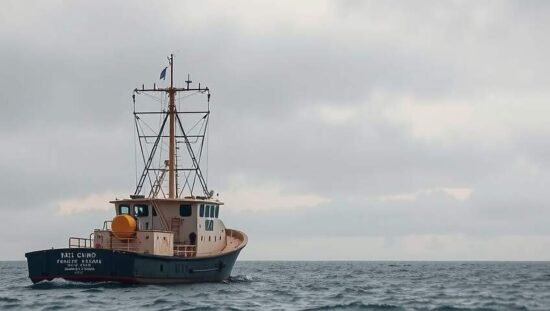The Council of EU Fisheries Ministers convened in Luxembourg this week to finalize fishing quotas for Baltic Sea stocks for 2026, a decision scrutinized for its implications on both ecological sustainability and the livelihoods of fishing communities. The agreed-upon measures, impacting species including herring, sprat, cod, salmon and plaice, represent a complex balancing act amidst ongoing concerns about the health of the Baltic ecosystem.
Notably, quotas for sprat have been substantially increased by 45 percent, while a 15 percent rise is planned for central Baltic Sea herring. This decision has drawn criticism from environmental groups who argue that escalating sprat harvests risk destabilizing the food web and potentially impacting predator populations. Conversely, fishing quotas in the Riga Sea, a particularly vulnerable area, will be reduced by 17 percent compared to previous years, a concession acknowledged as vital for localized stock recovery. Western Baltic herring quotas remain unchanged, underscoring a cautious approach, while the herring population in the Bothnian Sea faces a significant 40 percent reduction, reflecting ongoing struggles with overall stock health.
Salmon quotas demonstrate a fractured strategy, with an increase of 1 percent permitted in the Finnish Sea, juxtaposed with a 27 percent decrease in the main Baltic Sea basin. This discrepancy highlights the regional variations in salmon stocks and the challenges of enacting consistent management policies. A pivotal point in the agreement is the restriction of cod fishing to bycatch only, a clear indication of the ongoing effort to allow cod stocks to recover after decades of overexploitation. Plaice quotas have been trimmed by 3 percent, further demonstrating a trend towards stricter controls.
The Danish EU Presidency, in announcing the agreement, emphasized the need to “secure our common future”. However, the compromises involved suggest a lingering tension between economic pressures and environmental imperatives. Germany’s Ministry of Agriculture expressed satisfaction, particularly concerning the continued prohibition of targeted fishing for cod and herring in the western Baltic Sea – important for maintaining a semblance of ecological respite. Furthermore, positive signs regarding the recovery of western Baltic herring have prompted Germany to advocate for allowing limited targeted fishing by small-scale coastal fisheries using passive gear, such as gillnets and pots.
“Fishing along our coasts is more than just an economic sector – it’s a unique cultural heritage and a piece of our home” stated German Minister for Agriculture, Alois Rainer. This sentiment underscores the political weight attached to preserving traditional fishing practices, even as scientific data consistently points to the necessity of stricter conservation measures. However, critics question whether the allowed level of targeted fishing, even with passive gear, represents a genuine commitment to long-term stock health or merely a politically motivated concession to appease affected industries. The ongoing struggle to reconcile economic interests with environmental sustainability remains a critical challenge for Baltic Sea fisheries management.





